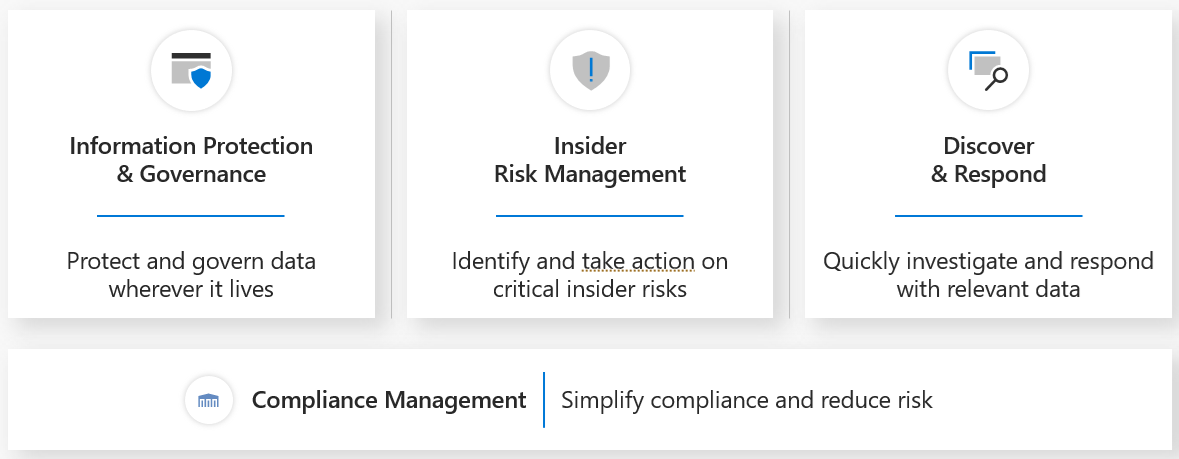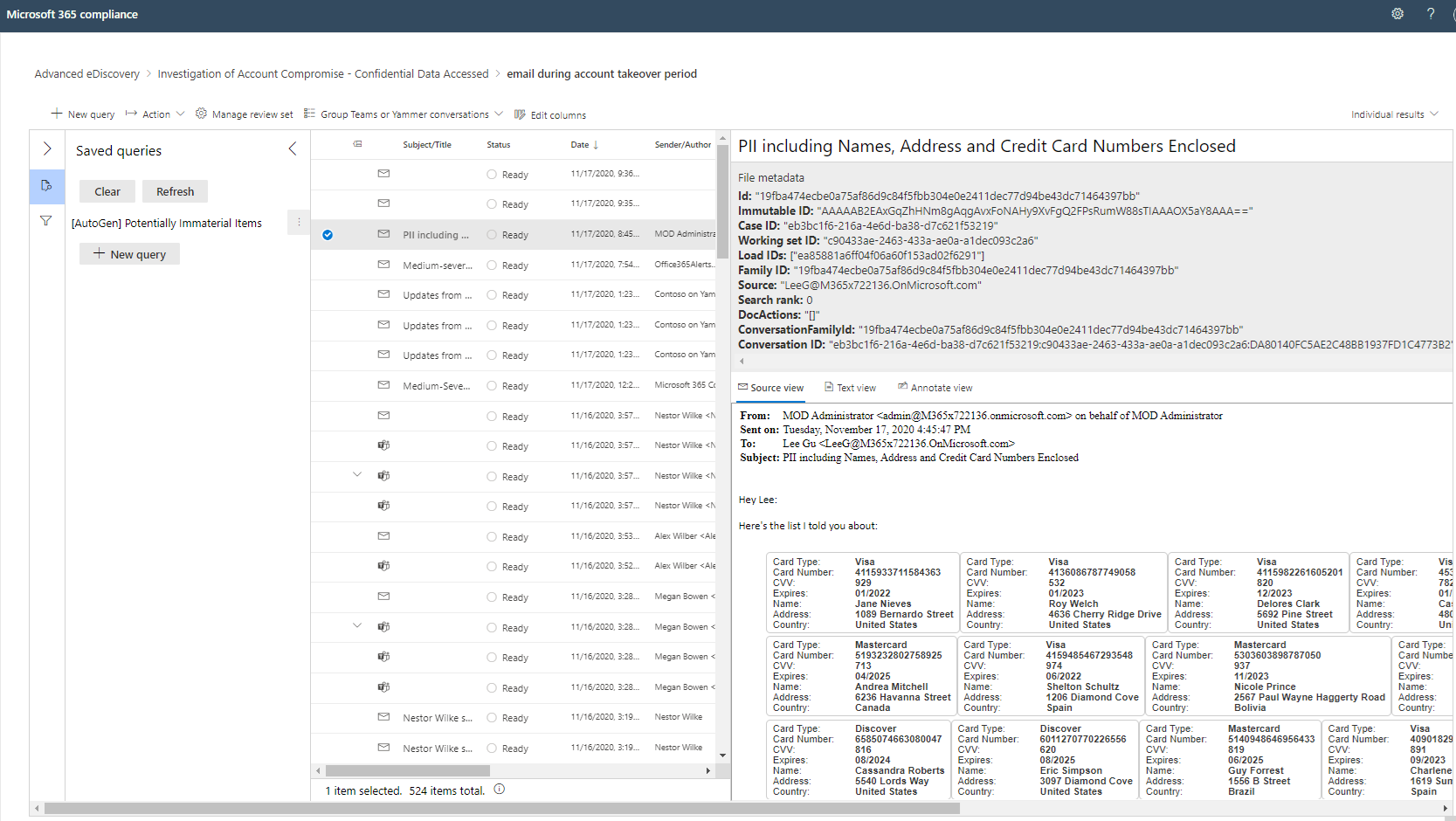
Privacy breaches: Using Microsoft 365 Advanced Audit and Advanced eDiscovery to minimize impact
GDPR, HIPAA, GLBA, all 50 U.S. States, and many countries have privacy breach reporting requirements. If an organization experiences a breach of customer or employee personal information, they must report it within the required time frame. The size and scope of this reporting effort can be massive. Using Microsoft 365 Advanced Audit and Advanced eDiscovery to better understand the scope of the breach can minimize the burden on customers as well as the financial and reputational cost to the organization.
A changing privacy landscape
In 2005 ChoicePoint, a Georgia-based financial data aggregator had a data breach of 145,000 of its customers. There were multiple security lapses and resulting penalties, but initially, only ChoicePoint’s California-based customers were required to be notified because, at the time, California, with California Senate Bill 1386, was the only state that had a mandatory privacy breach notification law.
Since that time, all 50 U.S. States have put in place mandatory privacy breach notification laws. Countries in the Americas, the Middle East, Europe, and Asia have adopted privacy standards including mandatory breach notification. Broader regulations that address this issue include California Consumer Privacy Act, China’s Personal Information Security Specification, Brazil’s Lei Geral de Proteção de Dados Pessoais (LGPD), and the European General Data Protection Regulation (GDPR). Given how often these laws are added or updated, it’s challenging for any organization to keep up. As one solution, Microsoft 365 Compliance Manager provides a set of continually updated assessments (174 and growing) to assist our customers with these standards.
A board-level business risk
The reputational and financial risk to a company from a privacy breach can be massive. For example, under California Civil Code 1798.80, which deals with the breach of personal health information, there is a penalty of up to $25,000 per patient record breached. For many standards, there are not only regulatory penalties imposed, but also the right of private action by those whose records have been breached (such as, those who have had their records breached can sue for damages, creating financial liability for a company beyond the regulatory penalties).
There are timeframes under which notification must be made. The California Code requires notification to the regulator within 15 days after unauthorized disclosure is detected. Article 33 of GDPR requires notification to the regulator within 72 hours after the organization becomes aware of the breach.
According to a list compiled by the Infosec Institute, the average cost of a data breach in 2019 was $3.9 million but can range as high as $2 billion in cases like the Equifax breach of 2017.
The reputational damage associated with a breach of customer, employee, or other stakeholders’ personal or business information can substantially reduce a company’s value.
The scope of notification (if any is needed at all) and remediation depends on understanding the scope of the breach in a timely fashion. In the absence of reliable information, companies need to make worst-case assumptions that may result in larger notifications, higher costs, and unnecessary hardship for customers and other stakeholders.

Preparation for breach
As security and compliance professionals, our priority is to avoid breaches with a defense in depth strategy including Zero Trust architecture.
Microsoft has comprehensive security solutions for Microsoft 365, as well as compliance and risk management solutions that enable our compliance pillar framework:

But we also must prepare for breaches even as we defend against them. Part of that preparation is putting our organization in a position to scope a breach and limit its impact. This means ensuring we have the data governance and signal in place before the breach happens. Security professionals know that they have to deploy solutions like Data Loss Prevention, firewalls, and encryption to defend against attacks, but they may not focus as much on having the right audit data available and retained, and visualizations and playbooks in place beforehand to scope a future breach.
Use Microsoft 365 Advanced Audit and Advanced eDiscovery to investigate compromised accounts
The Microsoft 365 Advanced Audit solution makes a range of data available that is focused on what will be useful to respond to crucial events and forensic investigations. It retains this data for one year (rather than the standard 90-day retention), with an option to extend the retention to ten years. This keeps the audit logs available to long-running investigations and to respond to regulatory and legal obligations.
These crucial events can help you investigate possible breaches and determine the scope of compromise. Advanced Audit provides the following crucial events:
- MailItemsAccessed: Triggered when mail data is accessed by mail protocols and mail clients.
- Send: Triggered when a user sends, replies to, or forwards an email message.
- SearchQueryInitiatedExchange: Triggered when a user searches for items in an Exchange mailbox.
- SearchQueryInitiatedSharePoint: Triggered when a user searches for items in SharePoint sites of the organization.
There are built-in default alert policies that use the Advanced Audit data to provide situational awareness either through Microsoft 365’s own security and compliance portal, through Microsoft’s Azure Sentinel cloud-native SIEM, or through a customer’s third-party SIEM. A customer can create customized alerts to use the audit data as well.
Let’s look at how a customer might use Advanced Audit to investigate a compromised account and scope the extent of a data breach:
In an account takeover, an attacker uses a compromised user account to gain access and operate as a user. The attacker may or may not have intended to access the user’s email. If they intend to access the user’s email, they may or may not have had the chance to do so. This is especially true if the defense in-depth and situational awareness discussed above is in place. The attack may have been detected, password changed, account locked, and more.
If the user’s email has confidential information of customers or other stakeholders, we need to know if this email was accessed. We need to separate legitimate access by the mailbox owner during the account takeover from access by the attacker.
With Advanced Audit, we have this ability. Without it, a customer will have to assume all information in the user’s mailbox is now in the hands of the attacker and proceed with reporting and remediation on this basis.
The MailItemsAccessed audit data item will indicate if a mailbox item has been accessed by a mail protocol. It covers mail accessed by both sync and bind. In the case of sync access, the mail was accessed by a desktop version of the Outlook client for Windows or Mac. In bind access, the InternetMessageId of the individual message will be recorded in the audit record.
We have the ability to forensically analyze mail access via a desktop client or via Outlook Web Access.

We also need to differentiate between the mailbox owner’s legitimate access to a mail item during the attack time period and access by the attacker. We can do this by examining the audit records to see the context of the access, including the session ID and IP address used for access. We match these with other audit records and known good access by the user.
Advanced Audit retains other events like Teams Joins, File Accessed, Messages Sent, Searches Queries, and many others that can support a breach analysis.
When we’ve properly scoped the data that the attacker has had access to, we want to deep dive and inspect the content.
With Advanced eDiscovery we can collect all emails, documents, Microsoft Teams, and Yammer interactions of the account that was taken over. We can search for confidential information and metadata to identify the material in question:

There is metadata for each item which, for emails, includes InternetMessageID as well as many other items such as from, to, and when it was sent, and any Microsoft Information Protection sensitivity label.
Advanced Audit and Advanced eDiscovery are an important part of an effective security risk and compliance strategy. These Microsoft 365 native tools allow our customers to understand the true scope of a breach. It has the potential to substantially reduce or eliminate the reporting requirements stemming from a compromised account. Advanced Audit can reduce the financial and reputational damage to a company, its customers, employees, partners, and other stakeholders.
To learn more about Microsoft Security solutions visit our website. Bookmark the Security blog to keep up with our expert coverage on security matters. Also, follow us at @MSFTSecurity for the latest news and updates on cybersecurity.
This document is provided “as-is.” Information and views expressed in this document, including URL and other Internet Web site references, may change without notice. You bear the risk of using it. This document is not intended to communicate legal advice or a legal or regulatory compliance opinion. Each customer’s situation is unique, and legal and regulatory compliance should be assessed in consultation with their legal counsel.
